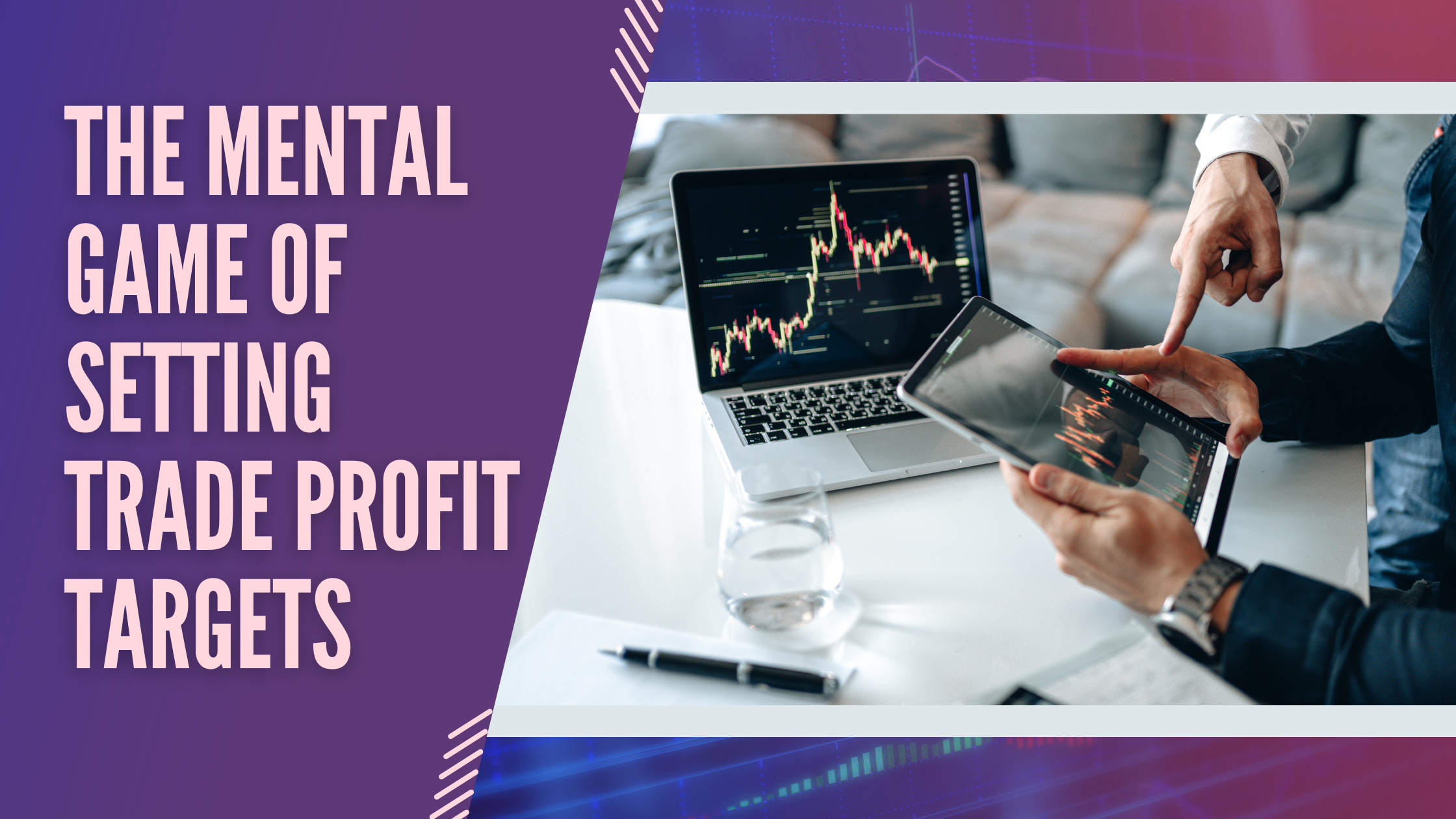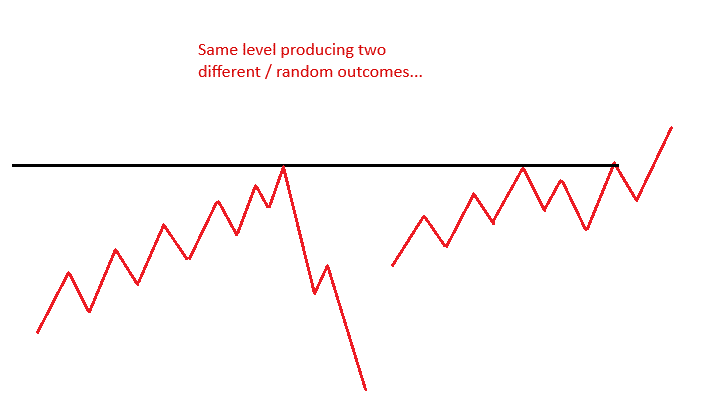 The hard, cold reality of trading is that every trade has an uncertain outcome.
The hard, cold reality of trading is that every trade has an uncertain outcome.
– Mark Douglas
The unpredictable nature of any trade makes it challenging to decide when to take profits.
As humans, we have an inherent desire to control situations, and this includes the market. However, the market’s unpredictability often clashes with this need for control, leading to cognitive dissonance. When events don’t unfold as we expect, it can lead to frustration, anger, or disappointment. In trading, this means that expecting a specific outcome from a trade can trigger a whirlwind of negative emotions if the result doesn’t match your expectations. These emotions can lead to costly mistakes that can severely impact your trading account.
Understanding the psychology of setting profit targets is crucial to avoiding these pitfalls.
Every Trade Has a Random Outcome
When you achieve complete acceptance of the uncertainty of each edge and the uniqueness of each moment, your frustration with trading will end.
– Mark Douglas
As Mark Douglas explains in his book Trading in The Zone, every trade you make is entirely independent of the last one and the next one. This principle is fundamental to understanding profit targets and why they often challenge traders. Many traders fall into the trap of believing that if a previous trade had a certain outcome, a current trade with a similar setup should yield a similar result. However, this mind-set is where problems arise, as Douglas emphasizes that each trade’s outcome is uncertain and essentially random.
It may seem counterintuitive to think that you can profit from trading when every trade has a random outcome. After all, traders do consistently make money over time. The challenge lies in holding two seemingly conflicting ideas simultaneously: First, that consistent profits are possible when you execute your trading strategy consistently over time, and second, that you cannot control the market, meaning each trade has a random, independent outcome.
The key to reconciling these two beliefs lies in understanding that profitability comes from consistently applying your trading strategy or edge across a large number of trades.
This concept is similar to how casinos generate significant profits from seemingly random games. Even if a casino’s edge is just 5%, over a large enough sample size, they will make 5% on every dollar risked, despite occasional big wins by players. The secret is in executing their strategy consistently over a long series of bets. Similarly, in trading, the focus should be on consistent execution over time to see the benefits of your edge.
It’s the ability to believe in the unpredictability of the game at the micro level and simultaneously believe in the predictability of the game at the macro level that makes the casino and the professional gambler effective and successful at what they do.
– Mark Douglas
Expectation: The Enemy of Trading Success
Let’s explore the psychology behind why traders often struggle with profit targets and trade exits, whether for gains or losses.
The root of these struggles is expectations. Traders who don’t fully grasp or accept that every trade has a random outcome, independent of any other trade, are often unprepared for results that deviate from their expectations. This is why a key pillar of successful trading is the understanding and acceptance of this randomness. Once you truly internalize that each trade is independent of the last, you’ll find that you’re neither disappointed nor overly excited by the outcome of any individual trade—because you’ll have no specific expectations.
When I put on a trade, all I expect is that something will happen.
– Mark Douglas
The only expectation you should hold is that if you consistently follow your trading strategy or edge over a large enough series of trades, you will likely come out profitable—assuming, of course, that you are using a sound trading strategy.
The Optimal Approach to Profit Targets and Trade Exits
Why do casinos make consistent money on an event that has a random outcome? Because they know that over a series of events, the odds are in their favor. They also know that to realize the benefits of the favorable odds, they have to participate in every event.
– Mark Douglas
Given our lack of control over the market, the most effective trade management strategy is to allow your trading edge or strategy to unfold naturally without interference.
Once you’ve entered a trade, there’s no way to predict how far the market will move in your favor or against you. Understanding this reality is crucial for managing trades effectively. The key is to let the market take its course, as this approach gives your strategy the best chance to work in your favor over a series of trades. For a visual representation of how the same trading edge (in this case, selling at a key resistance level) can yield two very different and random outcomes, consider the following diagram… Consider a trader who focuses on key support and resistance levels, fading them as price hits these points (selling when the price is high and buying when it’s low). This approach offers a practical glimpse into the inherent randomness of any given trade.
Consider a trader who focuses on key support and resistance levels, fading them as price hits these points (selling when the price is high and buying when it’s low). This approach offers a practical glimpse into the inherent randomness of any given trade.
The trader doesn’t know how far the market will move from these levels or whether it will reverse or begin to trend. The only certainty is that fading key chart levels is their edge, and to achieve long-term profitability, they must execute this strategy consistently.
This approach involves taking on market risk, but it also presents an opportunity to make money—similar to how a casino operates. A professional trader thinks like the house in a casino or a bookmaker, focusing on odds and probabilities. They understand that risking a small amount on each trade can lead to substantial rewards, though when these rewards occur is inherently unpredictable.
The randomness of each trade means there’s also a random distribution of winners and losers within any given trading strategy. You can’t know in advance whether a particular trade will be profitable; the only thing you can rely on is that consistent application of your strategy should lead to profitability over time. As a trader, you must mentally prepare for the fact that, even if you aim for a 200-pip profit, the trade might only reach 175 pips. This is where trading skill comes into play. Experienced traders may sometimes rely on intuition to exit a trade, and while there’s nothing wrong with that, it requires training, time, and experience to develop such instincts.
In conclusion, trading isn’t about being right all the time. As Mark Douglas emphasized, it’s about understanding probabilities. By combining a high-probability trading edge with an acceptance of the randomness inherent in every trade, you can position yourself to achieve consistent profits—provided you trade with discipline over a sufficiently large sample size.

